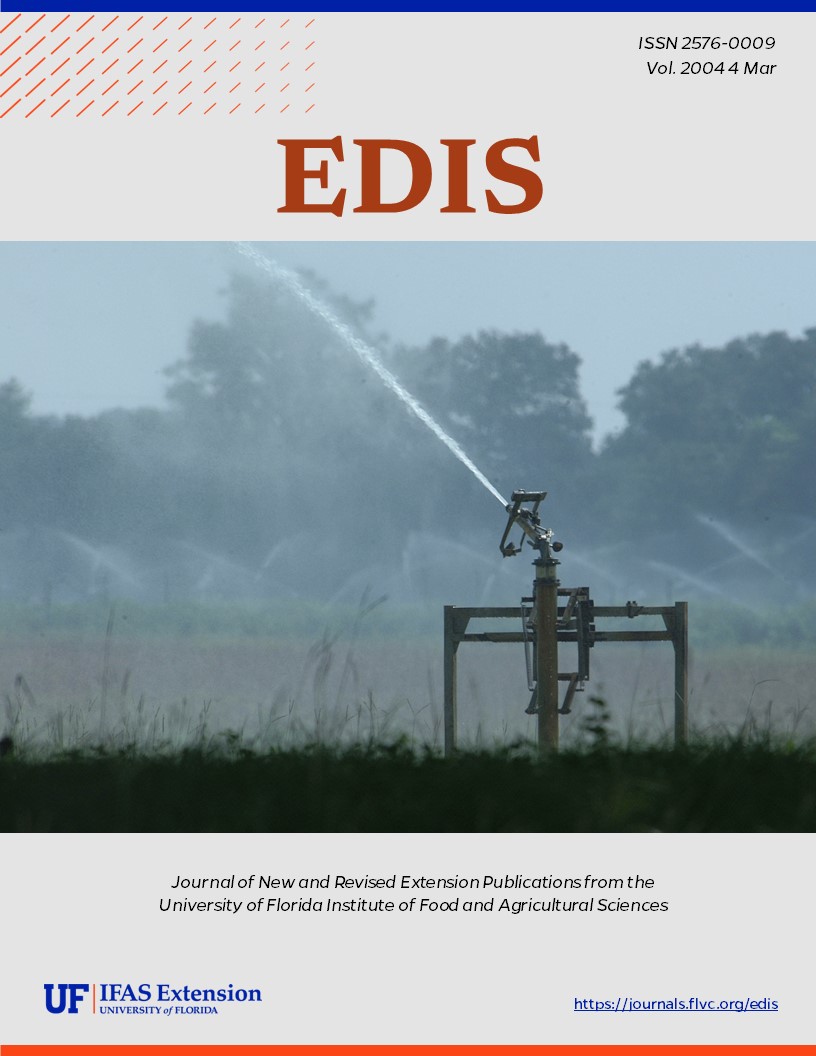Abstract
This 44-page booklet starts with a brief tutorial on the presence of bacteria in Florida lakes, and the aquatic environment in general, and then quickly turns to the subject that lake users are most interested in: possible sources of bacterial contamination and how to test for it. The discussion includes a comparison of the effectiveness of wastewater treatment plants versus septic tanks. Also, indicators used for detecting bacterial contamination are explained, along with basic laboratory methods. Lastly, an easy 4-step process is provided for tracking down bacterial contamination in a waterbody. Laboratory suppliers are listed at the end for individuals or groups interested in doing their own bacterial sampling. This document, CIR106, is the sixth of a series of information circulars dedicated to familiarizing citizens with the language and techniques used by those involved in water management. February 2003 © 1st Edition.
CIR106/FA103: A Beginner's Guide to Water Management?Bacteria (ufl.edu)
References
American Public Health Association. 1998. STANDARD METHODS for the Examination of Water and Wastewater. 20th Edition. American Public Health Association. Waldorf, Maryland.
Canadian Council of Ministers of the Environment. 1999. Canadian Water Quality Guidelines. Eco-Health Branch. Ecosystem Sciences and Evaluation Directorate. Environment Canada. Ottawa, Canada.
Hach Company. 2000. Hach's Technical Information Series-Booklet No. 13, The Use of Indicator Organisms to Assess Public Water Safety (Literature #7015.)
Hach Company. 2000. Microbiological Laboratory Start-up Guide. See Microbiological Testing Section, pages 135-182.
Hach Company. 2000. Analytical Procedures. Coliforms: Membrane Filtration (simultaneous detection) for the detection of total coliforms and E. coli from potable water, non-potable water, wastewater.
Hach Company. 1997. Products for Analysis Catalog (Literature #3226).
The Volunteer Monitor. 1998. Issue Topic: Monitoring Estuaries. Special Section: Bacteria Testing, Part 1. Volume 10, No. 2. Fall. Pages 8-15. Note: This publication is a must for individuals or groups interested in doing their own bacteria testing. Numerous testing methods are discussed and compared and information is even provided on how to build an incubator.
Toranzos, G. A. 1991. Current and possible alternate indicators of fecal contamination in tropical waters: a short review. Environmental Toxicology and Water Quality 6: 121-130. https://doi.org/10.1002/tox.2530060202
U.S. EPA. 2000. Non-point Source News-Notes. Special Focus: On-site Wastewater Treatment. December. Number 63. Note: News-Notes are accessible on EPA's website: www.epa.gov/OWOW/info/NewsNotes/index.html
Unless otherwise specified, articles published in the EDIS journal after January 1, 2024 are licensed under a Creative Commons Attribution-NonCommercial-NoDerivs 4.0 International (CC BY-NC-ND 4.0) license.

